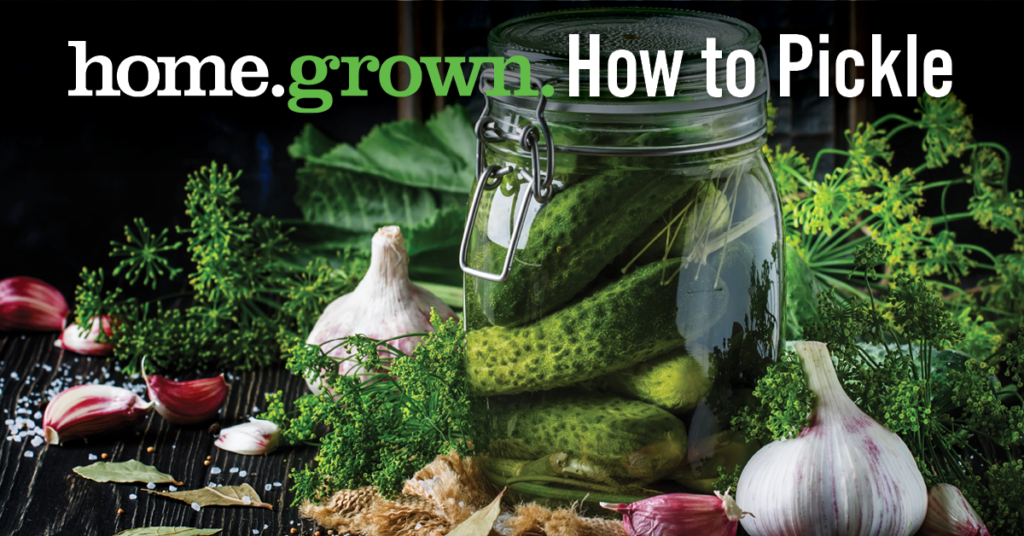
home.grown. Prolong Your Garden with Pickling!
Mia Teal
E-Commerce Marketing Intern
Summer is the best time of year for fresh produce. At Price Chopper and Market 32, we partner with a wide variety of local farmers in the region, but we know that many Northeasterners enjoy growing their own produce. If you fall into this category, your garden may just be overflowing, and you can only give away so many tomatoes! Pickling could be a good alternative for you and your veggies. We have exactly what you need from mason jars and lids and other canning and pickling essentials like large-size vinegar. Read below on how to pickle if this is new to you, and then stop in your local Price Chopper or Market 32 to get the supplies you need!
What exactly is pickling, and is it just for cucumbers?
Pickling is the process of preserving food in a brine solution in order to extend its shelf life. By brining certain foods, bacteria are not allowed to grow. There are so many food products that can be pickled, and just a few are listed below. Some may even surprise you!
Cucumbers, garlic, pork, beets, carrots, eggs, strawberries, blueberries, radishes, shrimp. onions, squash, peppers, beef, and mangoes.
History of Pickling:
Pickling foods is nowhere near a new concept. According to archeologists and anthropologists, they believe that ancient Mesopotamians pickled. Later, pickling was a necessity for families to have food throughout the winter months and was crucial for sailors on long voyages.
How to Pickle Your Garden Veggies:
Fresh vegetables without bruises from your garden are ideal to pickle. The shape you choose to cut your produce is up to you, but cherry tomatoes are best when left as a whole and carrots work well when cut into spears.
- Prepare your mason jar by washing it with warm, soapy water and then rinsing out completely. Dry thoroughly with a towel.
- Cut your vegetables into the shape of your choice and trim the ends. Add in any spices if you choose or garlic.
- Pack your vegetables tightly in the mason jars. Ensure that there is some room from the top of the vegetables to the rim of the jar.
- Prepare your brine by following the steps below:
- Combine: 1 cup water, 1 cup vinegar of choice, 1 tablespoon of salt, and 1 tablespoon of sugar
- Poor into a small pan over high heat and bring to a boil
- Continue stirring to ensure the salt and sugar dissolve
- Pour brine into mason jars
- Let vegetables cool for at least one hour before enjoying. The longer they sit in the brine, the better.
Happy Pickling!


